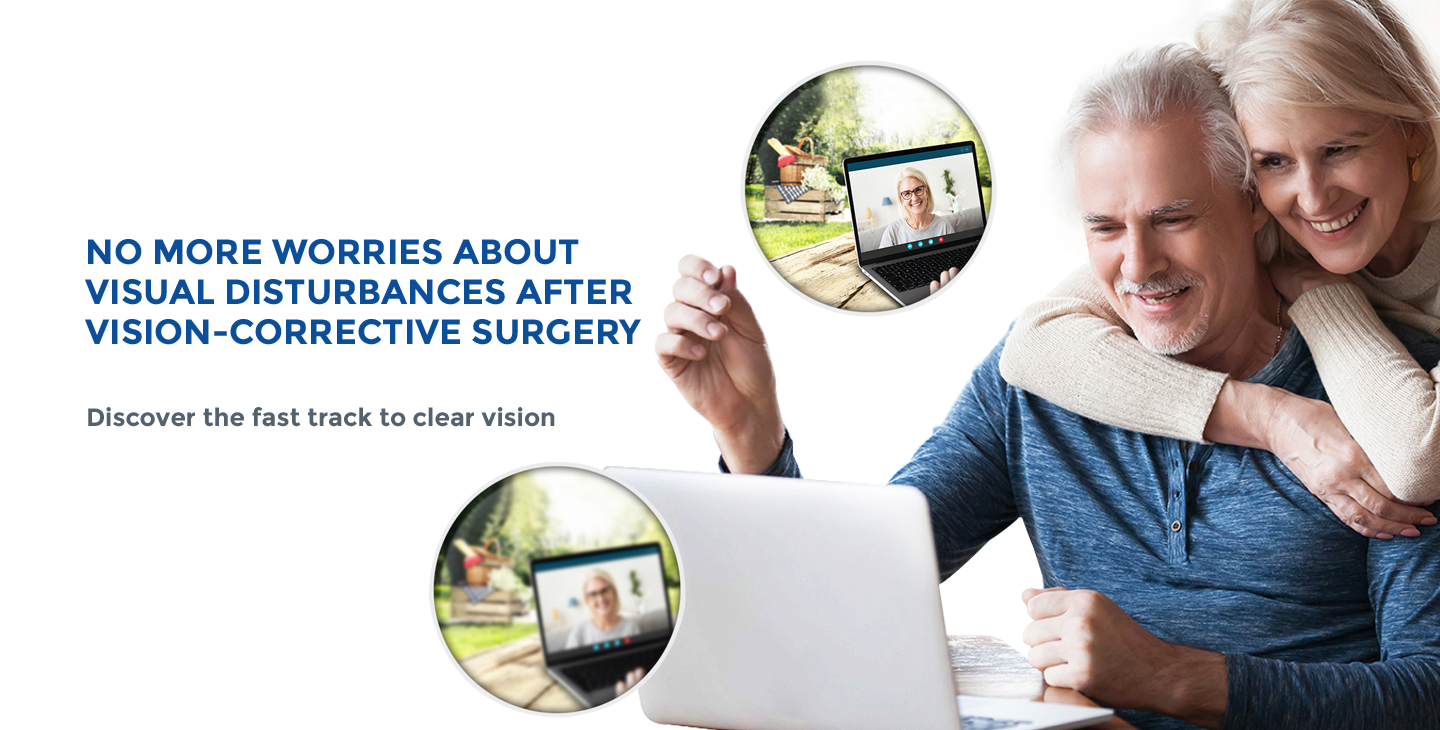
Say Goodbye to Visual Difficulties After Cataract/ Refractive Eye Surgery, Train Your Brain to View Better, Faster
Did you just undergo eye surgery to treat your cataracts with multi focal intra ocular lenses? Or you chose to reduce dependency on eyeglasses by undergoing refractive error surgery?
Are you finally ready to get back to your old hobbies of reading/gardening/driving?
Are vision disturbances post-surgery, like double vision, blurring of vision or poor depth perception, keeping you from enjoying these hobbies?
Worry not though, as these visual disturbances are transient and treatable. With the latest technological advancements in post-surgical eye rehabilitation, the improvements in vision are quite rapid and remarkable.
Let us understand how and why these visual disturbances occur and what can you do about it:
With cataract surgery, the old, damaged lens is replaced by a new synthetic IOL, whereas for refractive surgery, either the cornea is reshaped or a new phakic IOL is implanted in addition to the natural eye lens. The implanted IOL takes up the job of focusing visual imagery, and the brain now has to learn to interpret the new imagery relayed from the IOL.
New Lens, Same Brain
BYNOCS is registered trademark of Kanohi Eye Private Limited. BYNOCS software is copyrighted product of Kanohi Eye Private Limited with all Rights Reserved. 2020
Necessary cookies are absolutely essential for the website to function properly. These cookies ensure basic functionalities and security features of the website, anonymously.
| Cookie | Duration | Description |
|---|---|---|
| cookielawinfo-checkbox-analytics | 11 months | This cookie is set by GDPR Cookie Consent plugin. The cookie is used to store the user consent for the cookies in the category "Analytics". |
| cookielawinfo-checkbox-functional | 11 months | The cookie is set by GDPR cookie consent to record the user consent for the cookies in the category "Functional". |
| cookielawinfo-checkbox-necessary | 11 months | This cookie is set by GDPR Cookie Consent plugin. The cookies is used to store the user consent for the cookies in the category "Necessary". |
| cookielawinfo-checkbox-others | 11 months | This cookie is set by GDPR Cookie Consent plugin. The cookie is used to store the user consent for the cookies in the category "Other. |
| cookielawinfo-checkbox-performance | 11 months | This cookie is set by GDPR Cookie Consent plugin. The cookie is used to store the user consent for the cookies in the category "Performance". |
| viewed_cookie_policy | 11 months | The cookie is set by the GDPR Cookie Consent plugin and is used to store whether or not user has consented to the use of cookies. It does not store any personal data. |
Functional cookies help to perform certain functionalities like sharing the content of the website on social media platforms, collect feedbacks, and other third-party features.
Performance cookies are used to understand and analyze the key performance indexes of the website which helps in delivering a better user experience for the visitors.
Analytical cookies are used to understand how visitors interact with the website. These cookies help provide information on metrics the number of visitors, bounce rate, traffic source, etc.
Advertisement cookies are used to provide visitors with relevant ads and marketing campaigns. These cookies track visitors across websites and collect information to provide customized ads.
Other uncategorized cookies are those that are being analyzed and have not been classified into a category as yet.